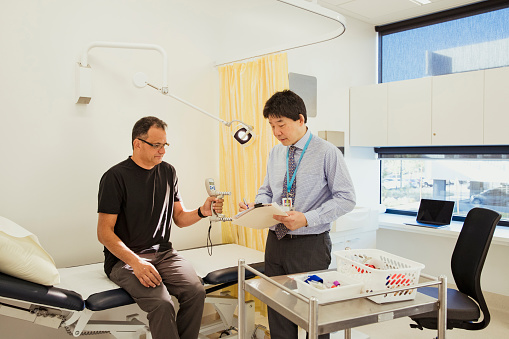Introduction
Testing grip strength is an important part of physical therapy, as it can help identify issues with hand function. Whether you’re a fitness enthusiast testing your person or a physical therapist testing patients, In this post, we’ll explore what Dynamometer grip strength is, why it’s important to measure, and how you can improve your grip strength.
What is dynamometer grip strength?
Dynamometer grip strength is the amount of force that can be generated by the muscles in the hand and forearm. The grip strength of an individual is often used as a measure of their overall muscular fitness. A dynamometer is a device that can be used to measure grip strength. There are several different types of dynamometers, but the most common type is the digital grip strength meter. This type of dynamometer uses sensors to measure the amount of force being applied to a handle. The readings from the dynamometer can then be used to calculate the grip strength of the person using it. grip strength is a important part of many activities, such as weightlifting, rock climbing, and football. It is also a good indicator of general health and well-being. People with weaker grips are more likely to suffer from conditions such as arthritis and osteoporosis.
What is the purpose of the grip dynamometer test?
The dynamometer grip test is a commonly used method for measuring grip strength. The test is typically performed using a digital grip strength meter, which measures the force exerted by the hand on the handle of the dynamometer. The purpose of the grip dynamometer test is to assess the strength of the muscles and tendons in the hand and forearm. Grip strength is an important indicator of overall musculoskeletal health, and it can be used to evaluate the effects of injuries, diseases, and rehabilitation programs. The dynamometer grip test is a quick and easy way to measure grip strength, making it an ideal tool for clinical and research settings.
Why would a physical therapist need it?
Physical therapists work with patients of all ages and abilities, from infants to the elderly. In order to provide the best possible care, they need to be able to evaluate their patients’ strength and range of motion. Dynamometer grip strength is a key measure of a patient’s ability to withstand force and flexibility challenges.

Dynamometer grip strength is often used in the evaluation of patients with hand, arm, shoulder, and neck injuries. It can also be used to determine a patient’s level of fitness and ability to participate in physical activity. Patients who have lower grip strength may be more likely to experience pain and functional limitations as a result of their injury. Additionally, dynamometer grip strength can be used as an indicator of overall health and well-being.
Physical therapists use a variety of measures to assess a patient’s grip strength. These measures include the Handgrip Strength Test (HST), the Arm Curl Test (ACT), the Shoulder Internal Rotation Test (SIRT), and the Neck Flexion Test (NFT). Physical therapists typically use the HST first because it is the most sensitive measure of grip strength.
What are the advantages of the grip dynamometer test?
The grip dynamometer test is a quick and easy way to measure hand grip strength. Hand grip strength is a good indicator of overall upper body strength, and it is also a predictor of future health problems such as osteoporosis. The grip dynamometer test can be performed with either a hand-held device or a machine. Hand-held devices are more portable and easier to use, but they are not as accurate as machine-based tests. Machine-based tests are more expensive, but they are more reliable. Grip strength is measured in pounds per square inch (psi). The average grip strength for men is about 120 psi, and the average for women is about 80 psi. Grip strength can be affected by age, gender, occupation, and level of physical activity. The grip dynamometer test is a simple, reliable way to measure hand grip strength.
Conclusion
Dynamometer grip strength is a measure of how strong your hands and fingers are. It can be used to evaluate hand function, assess the effects of muscular injury or disease, and help determine rehabilitation goals. If you’re a physical therapist who works with patients who have hand injuries or diseases (like arthritis), dynamometer grip strength may be an important measurement to take into account.




